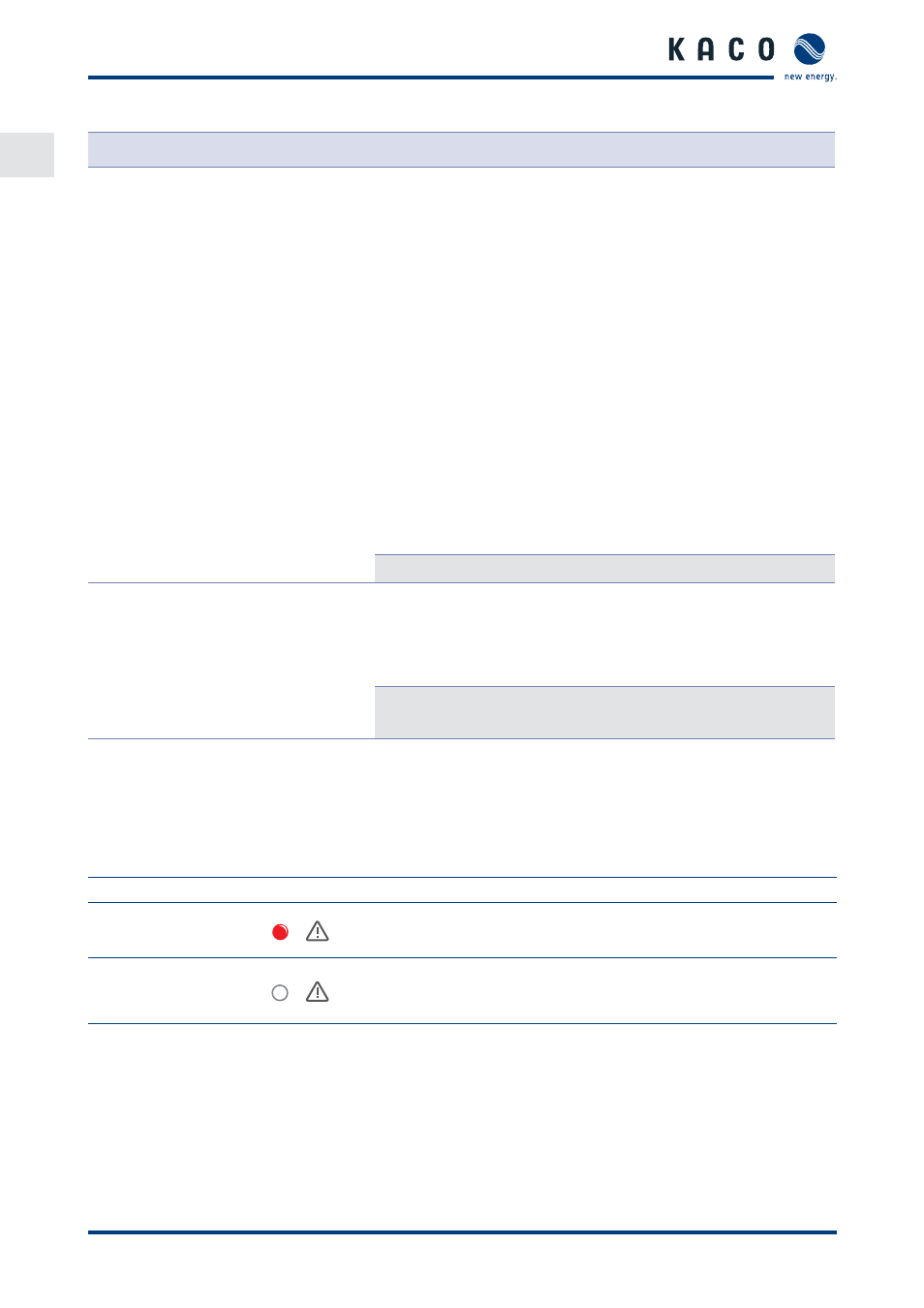6 messages on the display and the "fault" led – KACO blueplanet 3.0 - 4.6 TL1 User Manual
Page 48

EN
EN
Maintenance/Troubleshooting
Page 48
Operating Instructions for KACO blueplanet 3.0-4.6 TL1
Fault
Cause of fault
Explanation/remedy
By
Noise emission
from the inverter.
Particular ambient
conditions.
When there are certain ambient conditions, the units may
emit audible noises.
•
Grid interference or grid failure caused by particular loads
(motors, machines, etc.) which are either connected to
the same point on the grid or located in the vicinity of the
inverter.
•
In cases of volatile weather conditions (frequent switch-
ing between sunny and cloudy conditions) or strong solar
radiation, a light hum may be audible due to the increased
power.
•
Under particular grid conditions, resonances may form
between the unit’s input fi lter and the grid; these may be
audible even when the inverter is switched off .
These noise emissions do not aff ect the operation of the
inverter. They do not lead to loss of performance, failure,
damage or to a shortening of the unit’s service life.
People with very sensitive hearing (particularly children) are
able to hear the high-frequency hum caused by the invert-
er’s operating frequency of approximately 17 kHz.
No action
In spite of high
radiation levels, the
inverter does not
feed the maximum
power into the grid.
The device is too
hot and the system
limits the power.
Because the temperatures inside the unit are too high, the
inverter reduces its power to prevent damage to the unit.
Note the technical data. Ensure that the convection cooling
is not impeded from the exterior. Do not cover the cooling
fi ns.
Ensure suffi
cient cooling of the unit.
Do not cover the cooling fi ns.
B, E
9.6
Messages on the display and the "Fault" LED
Many fault signals indicate a fault in the grid. They are not operational faults of the inverter. The triggering levels are
defi ned in standards, e.g. VDE0126-1-1. The inverter shuts down if the values exceed or fall below the approved levels.
9.6.1
Display of status and fault messages
Display
Fault LED (red)
FS (fault status)
ON
•
Fault signal relay has switched.
•
Feed-in was ended due to a fault.
OS (operating status)
OFF
•
The fault signal relay releases again.
•
The inverter feeds back into the grid again after a
country-specifi c time period.
Details regarding the fault or operating status can be found either on the display or in the data that was recorded
through the RS485 interface.
9.7
Status and fault signals
The following table lists the possible status and fault signals that the inverter shows on the LCD and the LEDs.